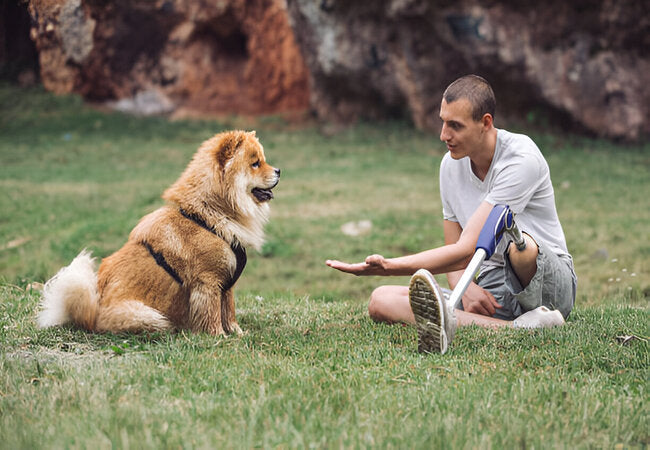Why Your Dog Sometimes Forgets His Training in 2025 – Vet‑Approved Insights & Solutions 🐶🧠

In this article
Why Your Dog Sometimes Forgets His Training in 2025 – Vet‑Approved Insights & Solutions 🐶🧠
By Dr. Duncan Houston BVSc
Have you ever felt proud of your dog’s training, only to see them “forget” those same commands later? Don't worry—you’re not alone. Dogs often lapse in obedience for clear veterinary and behavioral reasons. In this comprehensive 2025 guide, we’ll explore why dogs sometimes seem to forget training, identify contributing factors, and share authentic, vet-approved solutions to strengthen memory, consistency, and bond. Let’s dive in! 😊
1. 🧠 Stress & Environmental Change
Training recall in the PetMD article on clinginess notes that dogs can forget learned behavior in unfamiliar situations due to stress or confusion. A dog that responds well at home may suddenly ignore commands at the park because novel stimuli overwhelm them.
💡 Tip: Practice commands across various environments and distractions, gradually increasing complexity to build generalization.
2. 🔁 Inconsistency in Training
One of the most common causes of forgotten training is inconsistency. A study in Animal Wellness Magazine and other canine training experts confirms this: when rewards, cues, or rules aren’t applied uniformly, dogs become confused and less reliable.
This includes mixed signals from different family members—if one person enforces jumping and another encourages it, the dog receives conflicting messages.
🛠️ Solution: Create clear, household-wide expectations. Everyone should use the same command words and reward system for consistency.
3. 🔄 Age & Developmental Stage
Puppies and adolescents often regress in training. A Medium article explains that hormonal changes and brain development during adolescence can temporarily disrupt behavior control, leading even well-trained young dogs to flout commands.
As dogs age into their senior years, cognitive dysfunction—akin to dementia—can impair memory recall and learned behaviors.
🎓 Approach: For adolescents, maintain patience and consistency. For seniors, simplify cues, reduce distractions, and reinforce more frequently.
4. 🗣️ Training Methods Matter
Positive reinforcement—rewarding desired behavior—is the gold standard, supported by research showing better memory retention compared to aversive or dominance-based methods.
Lack of reinforcement or using punishment after the dog obeys can erode motivation and trust.
🌟 Best Practice: Use rewards immediately, being clear and consistent. Adjust reinforcement schedules (e.g., intermittent treats with consistent praise) to maintain learned behaviors.
5. 🧩 Memory Consolidation & Session Timing
Surprisingly, training more often isn’t always better. A Wired article reveals that dogs showed stronger recall when trained with shorter, spaced sessions rather than long daily drills.
This pattern mirrors human learning: neural pathways strengthen when training is given time to consolidate.
📘 Recommendation: Opt for brief (5–10 min), focused training sessions several times a week rather than long, repetitive drills.
6. 🗓️ Physical & Medical Reasons
Sometimes physical conditions—like cognitive dysfunction, pain (e.g., arthritis), sensory loss, or metabolic issues—can impair a dog’s ability to remember or respond to training.
If your dog misses previously mastered commands, especially alongside other signs like lethargy or bathroom accidents, consult a vet to rule out underlying conditions.
7. 📋 Vet‑Approved Step‑by‑Step Strategy
A. Diagnose & Normalize
- Notebook audit: note when and where lapses occur—new environments? specific people?
- Visit vet if cognitive decline or physical discomfort is suspected.
B. Re‑establish Foundations
- Return to basics in a low-distraction environment. Reset the training routine.
- Use high-value rewards. Practice commands with consistent timing and tone.
C. Increase Contextual Challenges slowly
- Train in yard → front garden → park—each session slightly more distracting.
- Have each family member practice with the dog using identical commands.
D. Maintain With Variation & Rewards
- Occasional intermittent treat schedules maintain performance—avoid dependence on treats alone.
- Rotate cues (“sit,” “down,” “come”) to keep sessions engaging.
E. Age‑Appropriate Adjustments
- Adolescents: Offer firm leadership, increased exercise, and short, fun training sessions.
- Seniors: Reduce distraction, give visual cues, increase repetition, and consider cognitive support supplements under vet supervision.
8. ✅ Summary Table
| Cause | Signs | Strategies |
|---|---|---|
| Stress/Environment | Good at home, poor in new places | Gradual exposure, short sessions |
| Inconsistency | Conflicted responses, multiple rules | Unified family training & cues |
| Life Stage | Teenage defiance, senior forgetfulness | Patience & structured adaptation |
| Poor methods | Disinterest, slow recall | Shift to positive reinforcement |
| Memory deficit | Sudden regression, confusion | Vet assessment & simplified cues |
9. 📱 Ask A Vet App 2025 Support
Empower your re‑training journey with Ask A Vet:
- 📹 Upload videos of training failures for remote vet/behaviourist feedback
- 🧠 Receive tailored training plans, age-appropriate reinforcement schedules
- 💬 Chat live for troubleshooting anxiety, distraction, or health-related lapses
❤️ Final Thoughts
Dogs forgetting training doesn’t mean failure—it’s a sign of learning complexity and life changes. Whether caused by stress, inconsistent signals, hormonal shifts, aging, or medical concerns, each lapse can be addressed with calm and purposeful veterinary-backed strategies. With thoughtful retraining, positive reinforcement, and consistent practice across life stages, you can help your dog regain—and retain—his best behavior well into 2025 and beyond. 🐶🧠✨
Need custom help? Visit AskAVet.com or download the Ask A Vet app to receive tailored support on training consistency, behavior refreshers, or health-related behavior changes.






